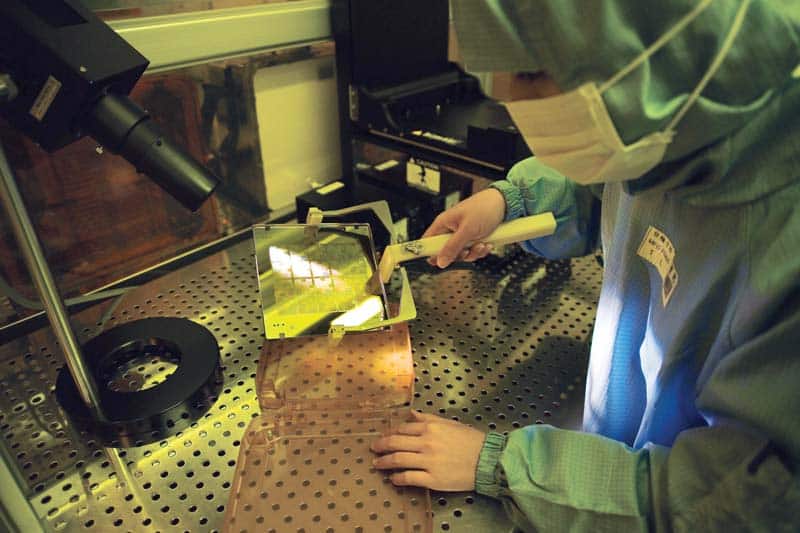It’s early days to assess the impact of geopolitical tensions between China and Taiwan on the supply chain. Ashish Bhatia looks at the repercussions feared.
Geopolitical tensions have proved to be disruptive, to say the least! With the dust from the Russia-Ukraine crisis yet to settle, many months and counting, the industry could have to deal with the prospects of a fresh body blow to the supply chain. The geopolitical tensions between China and Taiwan could pose a new challenge for trade dynamics. We’ve stressed in the past, how conflicts have all the makings of a case study for businesses. It reassures the need to have in place, a plan B and a plan C that can be pressed into action with agility to limit the losses. Sparing none, these conflicts, until the recent past, have had a detrimental impact on the growth trajectory of nations including the EU, the West and South Asian countries like India that find themselves in the advanced stages of a recovery cycle, in the aftermath of the pandemic. The components industry, as per Sunjay Kapur, President, ACMA and Chairman at Sona Comstar is at pre-pandemic levels clocking the highest-ever turnover of Rs. 4.2 lakh crore (USD 56.5 billion). This surpasses the previous peak turnover (inclusive of the aftermarket) of Rs.3.95 lakh crore in FY18-19. It is a 23 per cent growth in FY 2021-22 over the previous fiscal.


While the industry has registered a USD 700 mn trade surplus for the first time, with exports at 43 per cent and imports at 33 per cent, one can’t help but be concerned about the import dependence on China. Exports grew by 43 per cent to Rs.1.41 lakh crore (USD 19.0 billion) while imports grew by 33 per cent to Rs.1.36 lakh crore (USD 18.3 billion) leading to the trade surplus. Notably, imports from China account for nearly a third of the total imports (~30 per cent) behind Germany at 11 per cent. “The import dependence on China will not go away overnight, not for the components industry and not for anybody else,” asserted Kapur. Localisation efforts under the ‘Make in India’ and ‘Production Linked Incentive’ scheme on the Advanced Chemistry Cell (ACC) Batteries and Auto and Auto Components by the organised ACMA members (~850 member companies) will take a while to trickle in over the long term, he admitted. Sans a conflict that the industry would be pleased to do away with, it is brewing optimism about the revival of the economy and stability in vehicle demand. If only the state of equilibrium is sustained by protecting trade from a state of under-supply or shortage of key inputs to automotive manufacturers. OEMs have had to pass on the hikes to customers owing to the pressure on operating margins.
The trade equation
According to the ACMA FY22 performance report, the traction in the domestic market is a reflection of the component imports into India. Averred Vinnie Mehta, Director General, ACMA, that Asia accounted for 65 per cent of imports followed by Europe and North America at 27 per cent and seven per cent respectively. It is noteworthy that imports from Asia grew by 30 per cent, while those from Europe by 39 per cent and from North America by 36 per cent. A reason for it is the growing electronics content per vehicle as the industry shifts to EVs and prepares for the current (BSVI) compliances and the next phase of BSVI (OBD-II) set for compliance by April 2023. To meet the void of domestic production, imports are known to meet the requirements from time to time, basis the demand-supply equation for manufacturers, he explained. The demand is only set to rise further given that the auto component sales to the EV sector are pegged at one per cent (Rs.3,520 crore) of the auto component sales to OEMs.
The components industry is also keeping a close eye on commodity prices as there is pressure from Original Equipment Manufacturers (OEMs) to keep prices under check. While the CapEx cycles might have begun in good news for the economy, it is true that operating margins continue to be under pressure for suppliers and OEMs alike. This can be attributed to factors like raw material prices witnessing an 11 per cent spike in comparison to FY21. A major reason for the hike is the cost escalations in key input materials like steel and aluminium. For instance, steel prices in the last fiscal rose by 40 per cent with aluminium prices witnessing a 54 per cent hike. The 33 per cent spike in imports is already linked to the supply chain disruptions thus far. Especially the cycle witnessed in the first half of FY22 (H1-FY22). Notably, drive transmission and steering coupled with engine components are said to remain dominant segments for exports (54 per cent) as well as imports (49 per cent). The spike in imports can be traced to the whole gamut: 38 per cent on engine components; 22 per cent on Body/Chassis/BiW; 27 per cent on suspension and braking; 39 per cent on drive transmission and steering; 37 per cent on cooling systems; 35 per cent on electronics and electricals; 25 per cent on rubber components; 23 per cent on Interiors (non-electronic) and 208 per cent on consumables and miscellaneous items.
To gauge the sentiment, a chief strategist at a USD 1.5 billion hedge fund is known to have alerted investors to avoid chip manufacturers owing to the volatile equation between China, Taiwan, and the US. According to an International Monetary Fund study, the “geoeconomic fragmentation” could delay economic recovery and exacerbate scarring from the pandemic in Asia. With China reiterating the pledge of allegiance to a ‘One China Policy’ the deepening of cracks between China and Taiwan could also threaten India’s free trade agreements with Taiwan and the collaborative effort to build a flourishing domestic semiconductor manufacturing hub in India as one example. India is known to have concluded a bilateral trade of over USD seven billion with Taiwan over the last year. Firms from Taiwan are known to have invested over USD 2.3 billion in India. A weakening of Taiwan’s trade relations could, hence lead to unwanted collateral damage in the case of India. China’s intent to ban raw material export to Taiwan could affect the automotive industry in neighbouring regions like Thailand too where India has a trade presence. The raw material (silica) is crucial for semiconductor manufacturing. It is known to amount to ~90 per cent of the silica requirement by chip major Taiwan Semiconductor Manufacturing Co. (TSMC). Any friction between the two regions could lead to a rise in EV prices and delay deliveries! It will be a big blow to Taiwan itself which remains a largely export-driven economy (~70 per cent). Here semiconductors and IT technology is said to account for nearly 50 per cent of the exports.
To look at historic references for any indicators, since the Russia-Ukraine conflict began, an estimated 330+ businesses are known to have been forced to suspend production and trade in Russia cutting the production of vehicles by millions. Companies like the Volvo Group, confirmed Kamal Bali, President and MD, Volvo Group India, decided to not operate its fairly large asset base in the region. Like Volvo Group, other leading OEMs with a presence in the region have also been forced to take drastic measures. Chip manufacturers are known to have either withdrawn, diverted chips; companies have re-configured supply chains to address new shortages like the wiring systems sourced from Western Ukraine; deal with the spike in metal prices, fuel and gas prices. However, if business interests supersede, the worse could be put off and genuine fears allayed. Until such time, India could benefit from product design and manufacturing opportunities moving in from the conflict regions.
Also read, Green Engine Castings


























